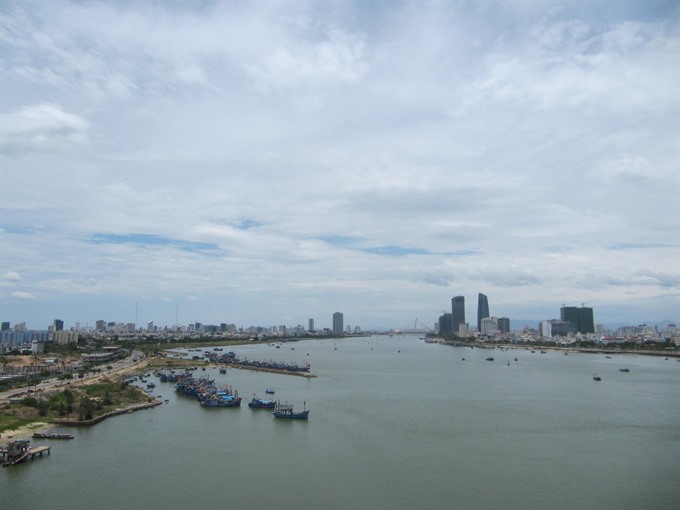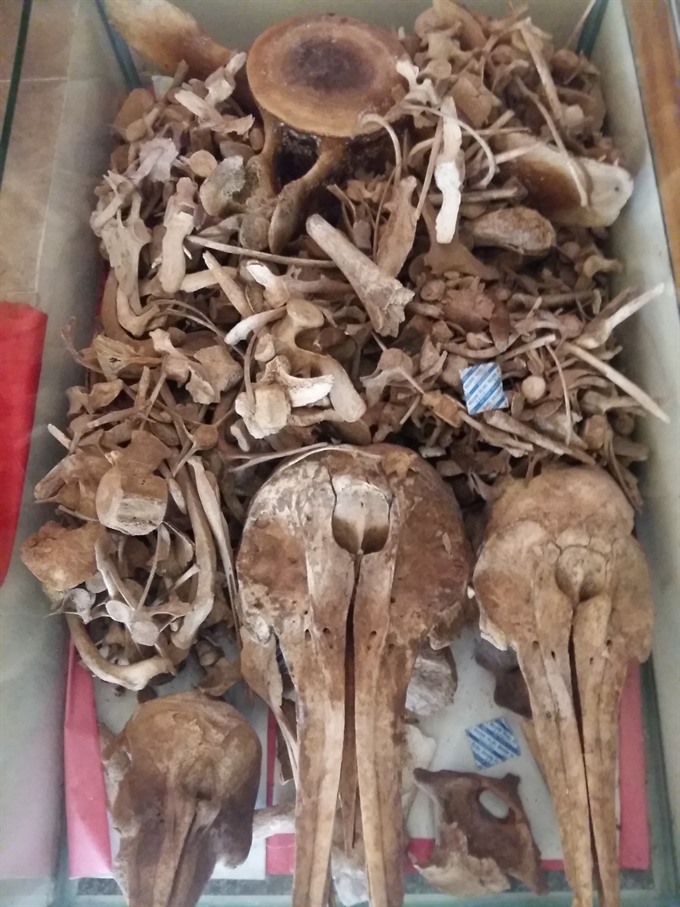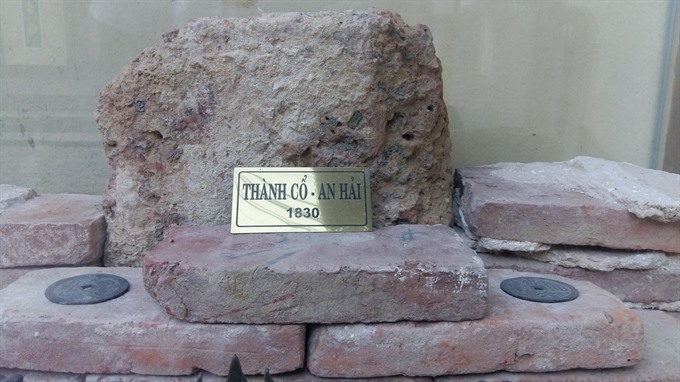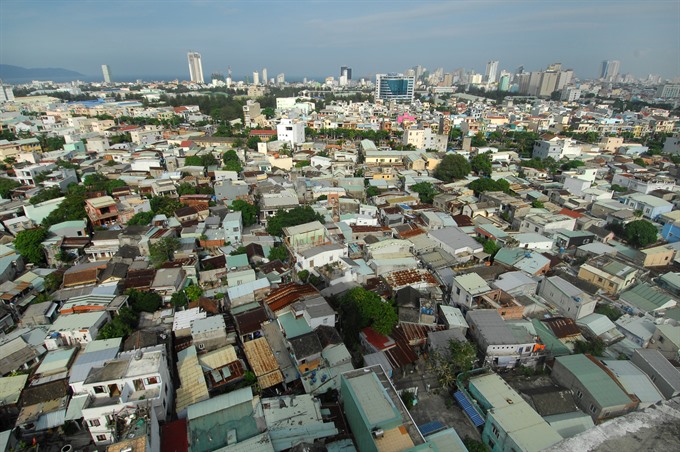 Features
Features

An Đồn fishing village is sandwiched between rapid urbanisation and a need for restoration. The village emerged 500 years ago close to the Hàn River with several families of fishermen. Villagers are trying to preserve vestiges of an old citadel built in 1813 during the Nguyễn Dynasty.
 |
| Colonial inroads: The Hàn River estuary. — VNS Photo Công Thành |
An Đồn fishing village is sandwiched between rapid urbanisation and a need for restoration. The village emerged 500 years ago close to the Hàn River with several families of fishermen.The fishing village gradually grew from 12 cottages in 1957 to more than 700 buildings and houses to accomodate nearly 4,000. Villagers are trying to preserve vestiges of an old citadel built in 1813 during the Nguyễn Dynasty. Hoài Nam reports.
Đặng Văn Điệu, 83, from An Hải Bắc Ward, Đà Nẵng City, in central Việt Nam, retired from fishing as the region went through a rapid face-lift.
Điệu, the fifth generation of fishermen living in An Đồn, on the Hàn River bank, said the village was built 500 years ago with only a few cottages, but was now home to nearly 4,000 living in 15ha of space with almost no proper infrastructure.
The village, home to the last community of fishermen in downtown Đà Nẵng, has no public transport and few other services, including fire stations and ambulances.
The village, which is now surrounded by four crowded streets - Trần Hưng Đạo, Ngô Quyền, An Đồn and Nguyễn Thế Lộc - can be found within a short walk of the Hàn Bridge, but strangers can get easily lost in the narrow alleys and forked paths.
“The village is maybe the last community left behind the rapid urbanisation of Đà Nẵng over the past two decades. From 12 cottages in the in 1957, more than 700 buildings and houses have since been erected,” Điệu said.
“Residents from other localities have flocked there in recent years and their new homes have gradually left the area in chaos.”
Điệu said the city had planned to convert the village into an urban area in early 2000, but a lack of funds ended plans. He said village traffic was only for motorbikes, bicycle riders and pedestrianss.
The old fisherman recalled that once most villagers earned their living from inshore fishing. He said he was the main breadwinner for his family of six chilren until 1990, when he stopped fishing as stocks declined.
“We used paddle-driven boats to fish in coastal area from Đà Nẵng to Lăng Cô in Huế from evening until early next morning. Fish went on sale at the Hàn and Cồn markets around 3am,” he said.
 |
| Gods of the sea: A skeleton of a whale is preserved at the Temple of the Whale in An Đồn Village. — VNS Photo Công Thành |
“The trade improved with engine-driven boats for offshore fishing in the 1960s. I did better for my children, but none of them followed in my footsteps," he said.
“Fishing requires plenty of skill and patience as well as iron muscles in fighting against rough seas. It’s not a job for everyone. My children started their own careers with more profitable businesses.”
Võ Văn Thanh, 82, said the scenery of the fishing village had disappeared as quickly as old Đà Nẵng had disappeared.
“The Hàn River was narrowed down as land was reserved for road development and buildings. We followed the river to the estuary for fishing trips. The village is a few hundreds metres from the river bank where our boat dock is now on Trần Hưng Đạo Street,” Thanh said.
“The village was easily seen from the river bank, but it now is overshadowed by high-rise buildings and hotels.”
 |
| Out of the past: Old sand-stone bricks and coins found in an excavation in An Hải Citadel in An Đồn Village. — VNS Photo Công Thành |
The old village is now only recognised by a temple honouring the village founder in Trần Hưng Đạo Street, 500m from the Hàn swing bridge. The temple was built in 1785, when the village appeared on the river bank.
Nguyễn Văn Muộn, 68, who is head of the village festival committee, said the temple was a small building before the first restoration in 1971.
“We host the annual village festival on the twelfth day of the June lunar month to mark the death of the village’s founder,” Muôn said.
“We still preserve old sand stones and coins found in excavations from an old An Hải Citadel in the east of the village,” he said. “A fresh-water well, which was dug 200 years ago, is still preserved."
 |
| Crowded village: A bird’s eye snap of An Đồn Village in Đà Nẵng city’s An Hải Bắc living quarter. — VNS Photo Mỹ Dũng |
Lê Văn Biểu, 85, said he was told by his father that an old citadel was built in the village as one of two citadels guarding Đà Nẵng from 1813.
It was built at the same time as Điện Hải Citadel on the other side of the Hàn River. The two military outposts were erected in the 12th year of King Gia Long’s reign (1813), near the mouth of the Hàn River, according to documents in the city’s museum.
The two citadels were built to control access to Đà Nẵng port and acted as an important defence position.
According to the city’s heritage centre, An Hải Citadel was build from compacted soil in 1813 before being restructured in brick in 1830.
An Hải Citadel, smaller than Điện Hải Citadel, was stationed by a group of 500 soldiers under commander General Nguyễn Văn Thành. The citadel was destroyed in 1860 after the French withdrew.
Old fisherman Điệu said two cannons found during excavations, were on display with an 11-cannon collection at Điện Hải Citadel - now Đà Nẵng’s Museum in Trần Phú Street.
Muôn, 68, the festival organiser, said a flag pole was built in the village to send signals to guards at the main Điện Hải Citadel on the other bank of the Hàn recognising the original country of ship coming to Đà Nẵng port.
The flag-pole now is still preserved in the village centre, in line with the tomb of a whale.
 |
| Remnant: A corner of modern An Đồn fishing village. — VNS Photo Mỹ Dũng |
Nguyễn Văn Mỹ, a photographer, in Sơn Trà District, has suggested that restoring the old fishing village would make it a tourism hub.
“I was born in a fishing village in Thọ Quang Ward in Đà Nẵng, so it’s sad if they all disappear under rapid urbanisation. A restoration plan is also needed to recover old vestiges,” Mỹ said.
“We should restore the old scenery of a fishing village to introduce visitors to the old community,” he said.
 |
| Room for one: A narrow path in An Đồn Village. — VNS Photo Công Thành |
“We can decorate the area brightly as an art centre, home-stay and live museum. Local residents could earn from tourism services, while a piece of the old village would be preserved forever."
Mỹ himself decorated his own basement café into a fishing village museum in Sơn Trà District.
He said former An Đồn Village would be an attractive site in Đà Nẵng where old fishing villages had vanished.
“We could live well in apartments with good facilities in modern life, but we would lose our ancestor’s treasure forever.” —VNS
A collection of 11 cannons unearthed at Điện Hải Citadel and An Hải Citadel from 1979-2008 is officially recognised as a national treasure. The iron guns, on display at the Đà Nẵng Museum on the old location of the Điện Hải Citadel, were cast during in the 19th century. The cannon collection is one of 30 cannons set up at the citadel to protect Đà Nẵng against French-Spanish coalition forces in 1858-1860. The citadel is connected to the famous general Nguyễn Tri Phương (1800-1873) under the Nguyễn Dynasty who commanded army and people in fighting against the French-Spanish forces. |




